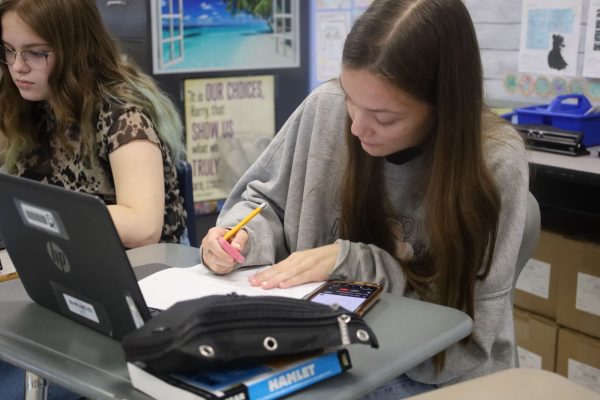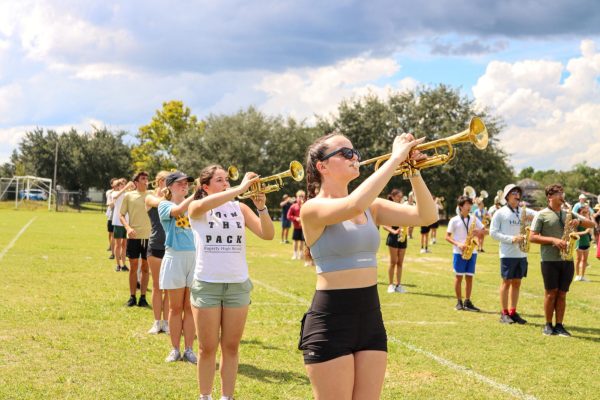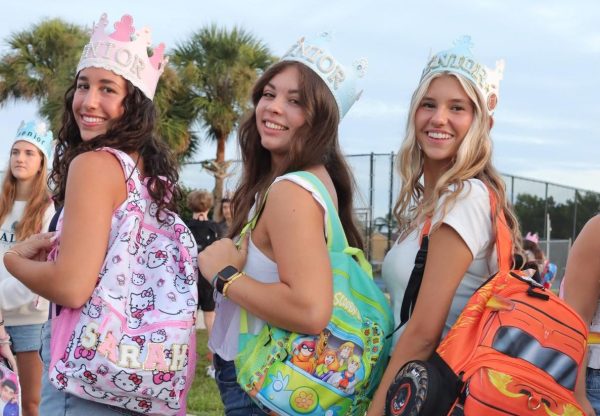Temple Run
Members of Jewish faith spend vacation days celebrating holidays at synagogue
When there is a day off from school, the school population cheers. They cannot wait to sleep in, go to the beach and hang out with their friends. This is how most people felt on Sept. 5, but not everyone had this luxury because while most students at school were off having fun, the Jewish teens were at temple for their holiday.
In Seminole County, 2.7 percent of the population is Jewish. This means the Jewish holidays are less known, but the county does allow the holidays that fall during the school week to be non-school days.
Freshman Sabrina Hutcheson is one of the few Jewish teens at Hagerty and like most Jews, she attended services for Rosh Hashanah, the Jewish New Year. While New Year’s Day falls on Jan. 1, the Jewish population has their own calendar so while everyone else is in year 2013, Jewish people are already in year 5774.
While at the two services for Rosh Hashanah, Jewish people pray for a safe and happy New Year. At sundown the first service officially starts the holiday and then a second service is held the following morning. The night service is shorter in length and more adults tend to go whereas the morning service lasts around three hours and is more popular.
Two traditions for Rosh Hashanah are to eat apples and honey as they resemble having a sweet New Year, and to eat a big meal with friends and family. The food at the meal usually consists of brisket, matzo ball soup, a bunch of side dishes and numerous desserts.
“I had a few friends who did not know why we had the day off,” sophomore Justin Baronoff said. “I think it is a little unfair how while everyone else is having fun, we are stuck in temple all day, but it is not too bad.”
Like Rosh Hashanah, Yom Kippur was a day off from school as well, but because it started at sundown on a Friday, no days off were needed. However, the varsity football game was moved to Thursday so that Friday night was open.
On Yom Kippur, the Jewish population must fast for a full 24 hours to essentially cleanse themselves of all of their sins and to start anew. There are also many more services to attend. The services tend to run the full day, so Jewish people are in temple. At the end of the day of a long fast, everyone comes together for a big break-fast where they can finally eat.
“Fasting is really tough. I try to do it, but I really can’t so sometimes I have to eat. I do not think most non-Jewish guys would be able to do it,” Baronoff said.
While most of the main Jewish holidays are known, minor ones such as Sukkot, Tu B’Shevat and Purim are not. Out of all of the Jewish holidays, non-Jewish people would most likely be able to identify Hanukkah, Yom Kippur, Passover or Rosh Hashanah. Hanukkah is most wide-known for it being similar to Christmas with the giving of gifts.
“I find the holidays to be really meaningful,” Hutcheson said. “They only happen once a year and they are a big part of the Jewish religion.”
Your donation will support the student journalists of Hagerty High School. We are an ad-free publication, and your contribution helps us publish six issues of the BluePrint and cover our annual website hosting costs. Thank you so much!






